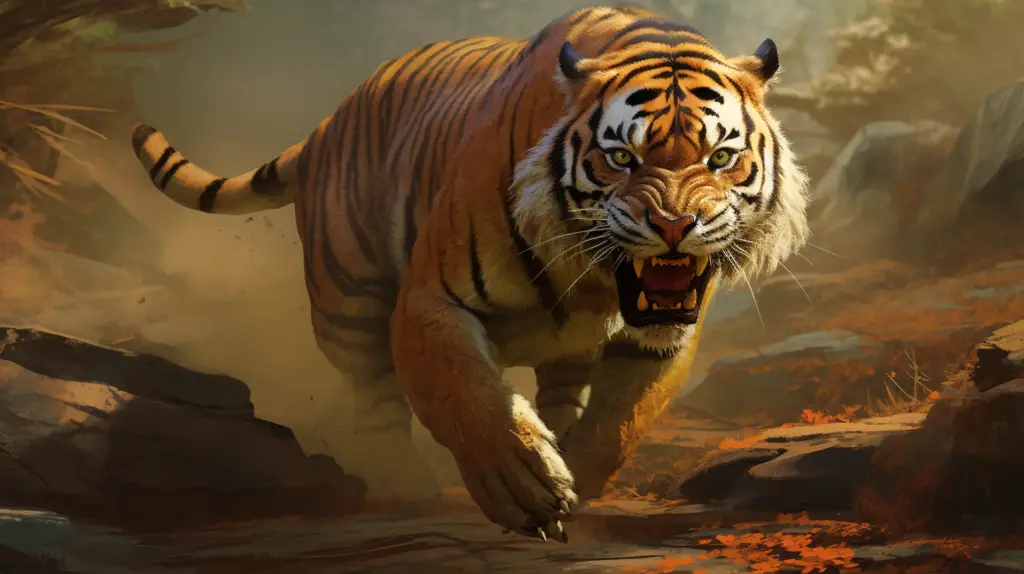Roaring into our hearts and imaginations, tigers are a symbol of raw power, stealth, and majestic beauty. As captivating as they are elusive, these iconic creatures have held a special place in various cultures and folklore across the world. However, while we’ve all seen tigers in movies, zoos, or storybooks, there’s a wealth of fascinating information about these big cats that often goes unnoticed.

In honor of International Tiger Day, celebrated every year on July 29th, let’s unearth 25 interesting facts about these majestic creatures and the day dedicated to them.
1. Tigers are the largest species among the Felidae (cat) family. A fully grown male Siberian tiger, the largest subspecies, can weigh up to 660 pounds and reach a body length of up to 10.75 feet.
2. International Tiger Day, also known as Global Tiger Day, was first established in 2010 at the Saint Petersburg Tiger Summit to raise awareness about tiger conservation.
3. The stripes on a tiger are unique to each individual, much like human fingerprints.
4. Tigers are solitary animals, with males and females coming together only during the mating season.
5. Despite their size, tigers are incredibly agile. They can leap distances of over 6m, and jump up to 5m vertically.
6. Tiger populations are largely nocturnal, primarily hunting from dusk until dawn.
7. International Tiger Day has its goal to promote the protection and expansion of the wild tigers habitats and raise public awareness and support for tiger conservation issues.
8. Unlike most members of the cat family, tigers love water. They are strong swimmers and often cool off in pools or streams.
9. Tiger cubs are born blind and only half of them survive to adulthood.
10. In the past century, the world has lost over 95% of its tiger population. As of 2023, there are estimated to be fewer than 4,000 wild tigers left.
READ MORE: 25 Fascinating Facts about India’s Love-Hate Relationship with Cats
11. Tigers are obligate carnivores and prefer large prey, like deer and bovine species.
12. A group of tigers is called an “ambush” or a “streak”.
13. The white spots on the back of a tiger’s ears are called “ocelli”, and they function to deter potential predators and communicate with other tigers.
14. Tigers can reach a top speed of 30-40 miles per hour, but only in short bursts to catch their prey.
15. Each year, International Tiger Day runs campaigns to gather funds for tiger conservation in the wild, with contributions coming from all around the world.
16. The gestation period for a tiger is approximately 3.5 months. The female gives birth to 2-4 cubs at a time.
17. Tigers have a lifespan of 10-15 years in the wild, but they can live up to 20 years in captivity.
18. A tiger’s roar can be heard as far as two miles away.
19. Tigers have been classified into six living subspecies: the Bengal, Indochinese, Malayan, Siberian, South China, and Sumatran tigers.
20. On International Tiger Day, many zoos and animal sanctuaries worldwide hold special events, like public talks and exhibitions, to draw attention to tiger conservation.
READ MORE: Why don’t Indians like cats? | New Delhi Travels
21. Tiger populations have decreased dramatically due to habitat loss, poaching, and retaliatory killings by humans.
22. Tigers have the largest canines of all big cat species ranging in size from 2.5 to 3 inches in length.
23. International Tiger Day promotes the idea of “Tx2”: the global goal to double the number of wild tigers by 2022.
24. Despite their fearsome reputation, tigers avoid humans; however, they have been known to attack in self-defense or if they feel threatened.
25. Tigers are integral to maintaining balance in the ecosystems they inhabit, playing a key role in controlling populations of herbivores, which in turn affects vegetation and landscape.
READ MORE: 20 Amazing Facts About Black Cats: History, Myths, Superstitions
Our awe-inspiring tigers are a testament to nature’s brilliance, and the celebration of International Tiger Day is a call to each one of us to participate in their preservation. Let’s strive to increase public consciousness about tiger conservation and ensure that these majestic creatures continue to roam our Earth for generations to come.

